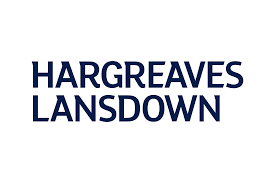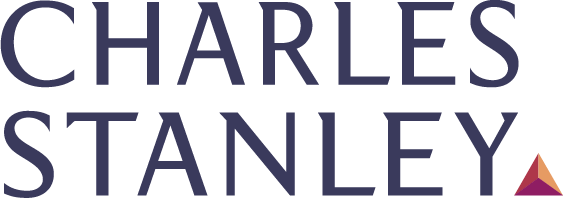It is essential to look at the pros and cons of both workplace pensions and personal pension plans (often referred to as private pension plans). While both offer a degree of tax relief, they are very different products, and it is important to take financial advice at the earliest opportunity.
Maximise your retirement fund with our panel of pension providers. Click on your chosen provider to get started!
Different types of pension plans
Whether looking at personal pensions or workplace pension schemes, there are several different types of plans to consider.
Different types of personal pension plans
Private pension plans tend to be more popular amongst the self-employed and those who change employers regularly. The UK government Pension Wise website lists many different personal pension plans, with the more common being:
- Managed personal pension plans - investments managed by third parties
- SIPP (Self Invested Personal Pension) - assets managed by individuals
- Stakeholder pension - invested in collective funds with a range of risk profiles
These three personal pension plans cover a range of management choices and risk profiles. It is crucial to speak with a financial adviser to identify the best option for you.
Different types of workplace pension� plans
Workplace pension plans tend to yield the most significant benefits for those looking at a long-term career with their current employer. When looking at occupational pension schemes, there are two different types of workplace pension arrangements:
- Final salary schemes (defined benefit pension) - pension income is linked to your final salary
- Money purchase schemes (defined contribution pension) - pension income is tied to investment performance
Most workplace pension schemes are now money purchase (defined contribution schemes). This is because defined benefit pension schemes require employers to make up any shortfall between pension pot investment performance and final salary based pension payment liabilities.
State pension
The level of state pension you will receive in retirement is directly related to your national insurance contributions over the years. In recent times we have seen some adjustments to the state pension age to reflect improvements in life expectancy.
Setting up a pension
When looking at personal pensions and workplace pensions, there are significant differences when setting up a pension plan.
Setting up a personal pension
As the term suggests, a personal pension plan is set up by the individual through a pension plan provider. The pension plan provider is effectively a trustee of your pension scheme, ensuring that you abide by the pension regulations. They will also be there to offer advice and guidance to varying degrees.
Joining a workplace pension scheme
Most workplace pensions are automatic enrolment which means that employees are automatically added to an existing workplace pension scheme. The employer sets up the plan, traditionally managed by a third-party financial services provider.
Pension fund contributions
Whether you are paying into a workplace pension scheme or a personal pension, you will receive tax relief on your contributions. The rate of relief is as follows:
- Basic rate taxpayers, 20%
- Higher rate taxpayers, 40%
- Additional rate taxpayers, 45%
For example, if a basic rate taxpayer were to contribute £100 to their pension scheme, it would only cost £80. The additional £20 is tax relief from the government. You can contribute 100% of your annual income, up to a maximum of £40,000 a year, and receive tax relief.
Personal pension scheme contributions
Your personal pension plan administrator would need to apply to the government to reclaim tax on any pension fund contributions.
Workplace pension scheme contributions
If you contribute to a workplace pension scheme, your employer will deduct your pension fund contributions from your pay before tax. As your contributions are gross, there is no need to reclaim the tax element, which will already be included.
With a qualifying workplace pension scheme, you must pay a minimum of 5% of your gross salary and your employer a minimum of 3%.
Contributing after pension age
Whatever the minimum age at which you can access your pension benefits, you are not obliged to take them at the earliest opportunity. Indeed, many personal/workplace pension plans will allow you to continue contributions up to the age of 75 if you do not yet receive pension payments. This should be an integral part of your retirement planning, and it is essential to keep up-to-date with the latest news.
Investment flexibility
For those looking to manage their pension savings actively, the subject of investment flexibility is crucial. There are many factors to consider concerning personal pensions and workplace pensions:
Investment flexibility with personal pension schemes
The greatest flexibility regarding investment decisions resides with personal pension plans. While there is still the option to appoint a third party to manage your pension pot, there is also the option to take more control. Even with a basic personal pension, you may have the opportunity to decide which collective investment funds with which to place your pension pot. Then we have SIPPs, specifically for those looking to take a more active role in investment decisions.
Investment flexibility with workplace pension schemes
Whether a defined contribution scheme or a defined benefit scheme, you are unlikely to have any say in where your funds are invested. Workplace pension schemes involve individuals and employers paying into one central pension fund pot, which is invested accordingly. Therefore, it is impossible for individual pension scheme members to manage their "portion" of the group pension under this arrangement.
Investment flexibility is one of the significant differences between personal and workplace pensions plans. For example, if a private pension scheme outperformed a workplace pension pot by at least 3% per annum, this would effectively negate the minimum employer contribution to a workplace scheme. So even though a workplace pension scheme is the best choice for many people, a personal pension scheme may be more suitable for those looking for a more hands-on arrangement.
Receiving pension benefits
Whether you have a workplace pension scheme or a private pension plan, you will be entitled to a 25% tax-free lump sum when you reach the qualifying age. The age at which you can receive your pension benefits varies between personal pensions and workplace pensions.
Personal pension plans
Most personal pension plans allow you to begin drawing down from your pension pot at 55. Due to recent government legislative changes, this lower limit will increase to 57 from 2028. You have the option to take regular payments, ad-hoc payments or delay payments until a future date.
Workplace pension schemes
Traditionally, the minimum age at which you can take pension benefits from a workplace scheme is between 60 and 65. However, there will be some schemes where early drawdown is available from 55 - this will all be covered in the scheme's paperwork. Depending on the scheme setup, you will have the option to take regular payments when you reach the qualifying age or delay payments until a future date.
Pension payments as a consequence of ill-health
In some circumstances, where the individual suffers from serious ill-health, it may be possible to take pension benefits before 55. In this scenario, pension benefits can often be available as a lump-sum payment rather than the traditional 25% tax-free entitlement and regular payments.
Any pension payments above and beyond the 25% tax-free lump sum will be subject to your regular income tax rate.
Consider your personal and workplace pension options
Retirement income is essential in later years, and you should consider all pension and investment options. Even though Brexit and the coronavirus have impacted investment returns in the short term, pension arrangements are long-term commitments for later life. Unfortunately, rogue advice concerning pension transfers and pension scams has cost many people recently. However, after recent legislative changes, the Pensions Regulator now has greater enforcement powers, leading to enhanced protection for consumers.
Whether considering joining a pension scheme, setting up a personal pension, enacting a pension transfer or looking for a pension calculator, it is vital to take professional financial advice.







